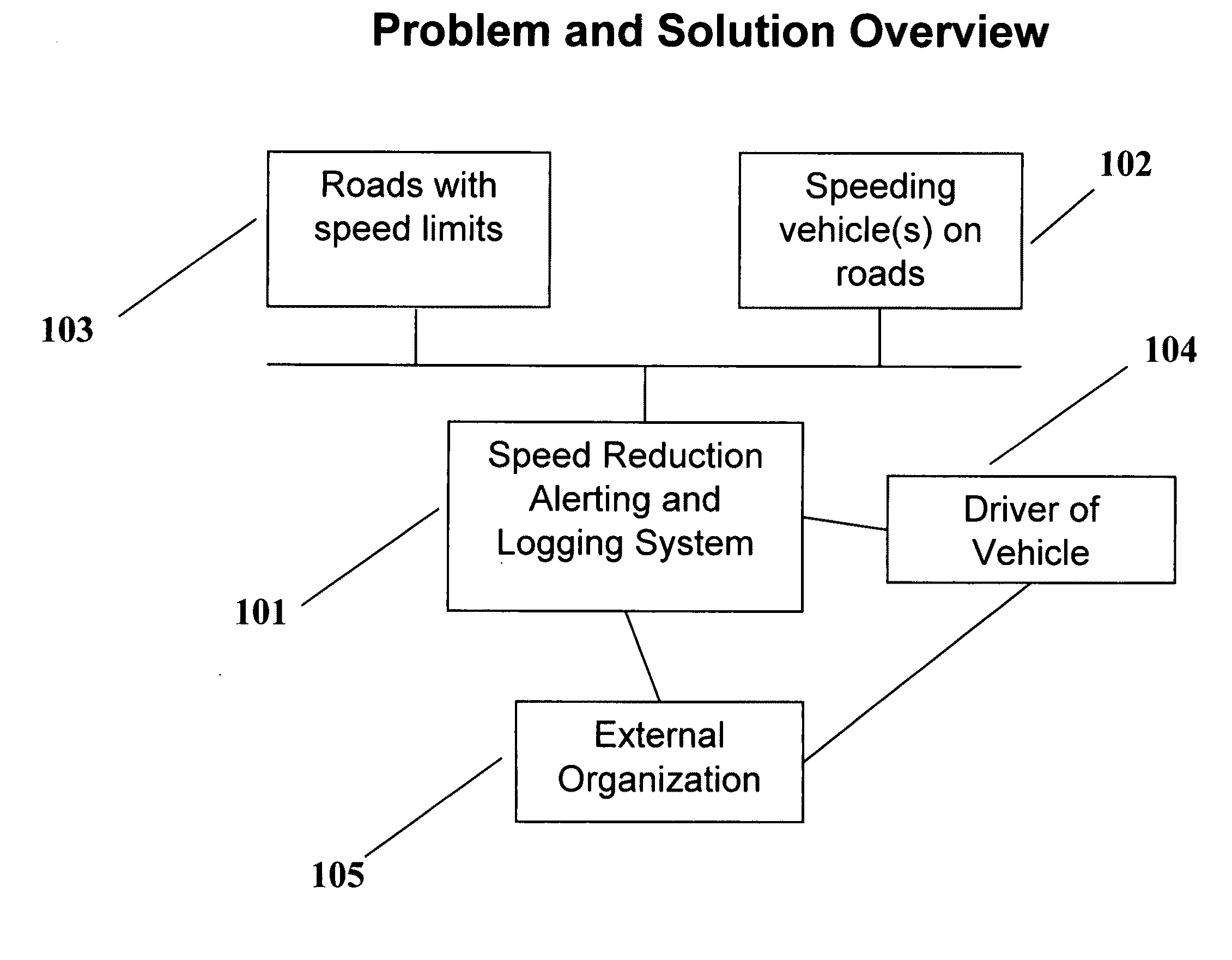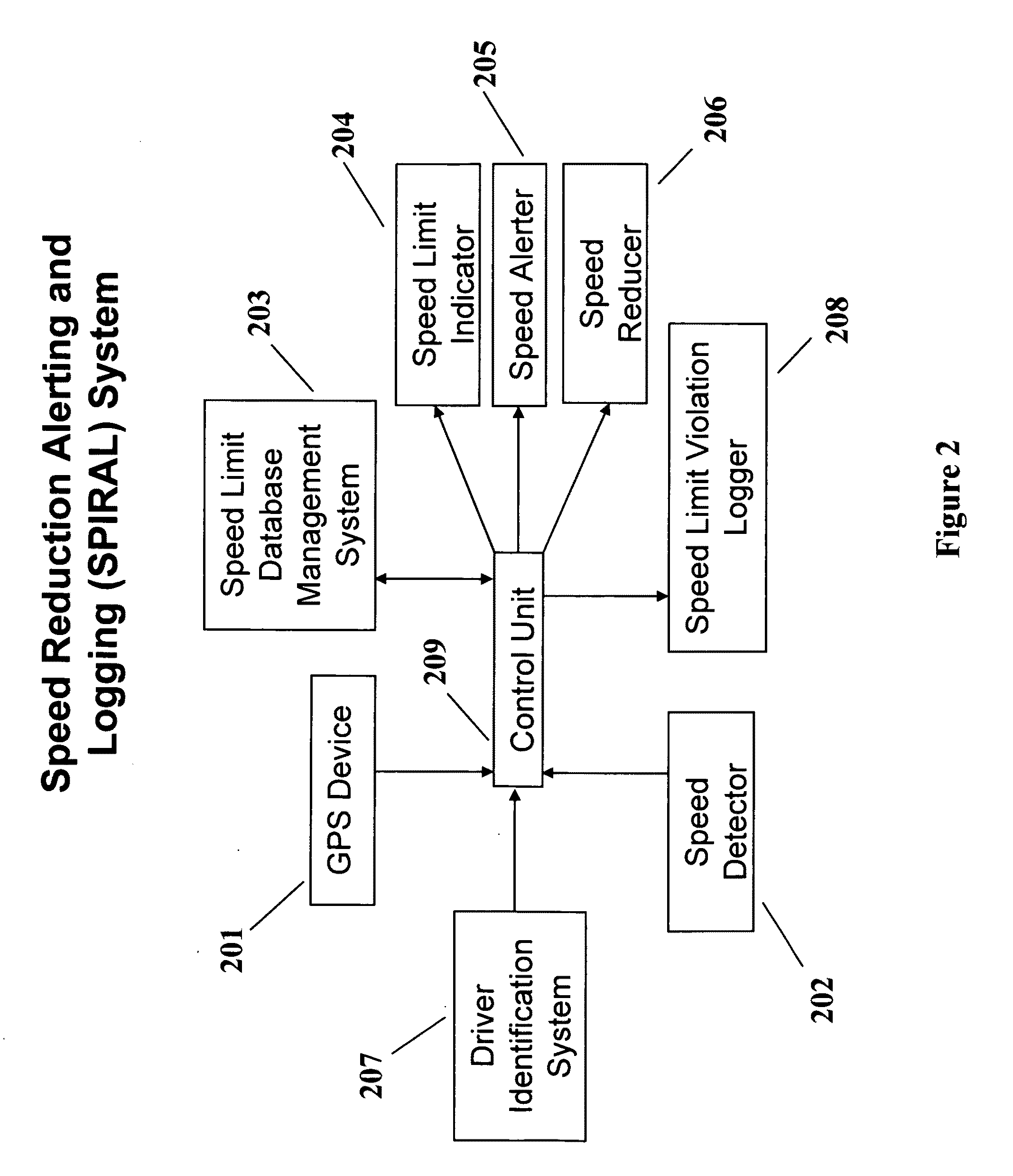Speed reporting for providing conditional driver treatment
a technology for conditional driver treatment and speed reporting, applied in the field of automobility vehicles, can solve the problems of serious impact on the environment and economy, the risk of speeding drivers, and the inability of drivers to actually reduce their speed, so as to improve their driving habits
- Summary
- Abstract
- Description
- Claims
- Application Information
AI Technical Summary
Benefits of technology
Problems solved by technology
Method used
Image
Examples
Embodiment Construction
[0045]FIG. 1 provides a high-level view of the problem and the solution provided by the SPIRAL System. The SPIRAL System 101 interfaces with a vehicle 102 which may at times be speeding. The SPIRAL System accesses a database providing speed limits on different roads 103. The SPIRAL System furthermore interfaces with the driver 104 of the vehicle, and may also interface with an external organization 105 with which the driver may interact.
[0046]FIG. 2 shows a high level description of the main components that comprise the SPIRAL System. It should be understood that while these items are referred to as components, that they may exist either as physical components or as logical functionalities that may be included or combined in a single physical component. To the extent they exist as separate physical components, they may be combined and packaged in different manners and still fall within the scope of this specification. A description of these components / functionalities follows:[0047]A...
PUM
 Login to View More
Login to View More Abstract
Description
Claims
Application Information
 Login to View More
Login to View More - R&D
- Intellectual Property
- Life Sciences
- Materials
- Tech Scout
- Unparalleled Data Quality
- Higher Quality Content
- 60% Fewer Hallucinations
Browse by: Latest US Patents, China's latest patents, Technical Efficacy Thesaurus, Application Domain, Technology Topic, Popular Technical Reports.
© 2025 PatSnap. All rights reserved.Legal|Privacy policy|Modern Slavery Act Transparency Statement|Sitemap|About US| Contact US: help@patsnap.com



